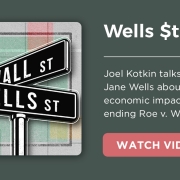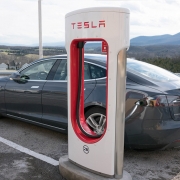Five Ways to Stop the Exodus
By: Mark Calvey and Allison Levitsky
On: San Francisco Business Times
More companies are making the leap outside California. How can the Golden State bring back its golden touch?
“We cannot solve our problems with the same thinking we used when we created them.”
Albert Einstein might as well have been talking about California’s corporate exodus when he said that quote, once spotted on the walls of Intel’s Santa Clara headquarters.
A dozen major companies, hundreds of small and midsized ones and thousands of individuals have moved out of the state and the Bay Area in recent years, but few in government seem to be paying attention, even as the movement is poised to intensify.
“I think we will see even more of the relocations in 2021, especially among senior executives, investors and professionals who are more affected by high state taxes and can easily do their work remotely,” said Alison Davis, a prolific fintech investor and member of the board of Silicon Valley Bank’s parent, SVB Financial Group.
Texas and other states are courting Bay Area companies, mining the pricey innovation capital for firms that might be wooed by lower taxes — the Lone Star State doesn’t collect personal income or capital gains taxes from Texans — along with cheaper housing and looser business regulations.
As business leaders fear this is just the beginning, we asked more than a dozen corporate and government leaders: What can state and local officials do to coax companies to stay?
- Lower taxes on personal income and capital gains.
California’s comparatively high taxes — not to mention new levies state lawmakers in Sacramento have been considering — are blamed for spurring more middle-class and wealthy residents to move out of the Golden State, or consider doing so.
“The tax situation is unbearable,” said former Cisco Systems Inc. CEO John Chambers, voicing concern about California lawmakers considering a bill to raise the state’s top personal income tax rate from 13.3% — already the highest in the nation — to 16.8%.
The legislation didn’t pass in 2020 but is expected to be on the legislative agenda again this year. Unlike at the federal level, there is no favorable tax treatment on long-term capital gains in California, adding to the tax burden of state residents. That means Californians also pay a top tax rate of 13.3% on their long-term capital gains.
Last year, California lawmakers also briefly considered a so-called wealth tax that would impose a 0.4% tax on residents’ net worth above $30 million, excluding real estate. The proposed bill even included a feature that would tax wealthy people for 10 years after leaving the state, though the constitutionality of that measure, if passed, would have been left to the courts. The bill never came up for a vote in the last legislative session, but some fear a proposed wealth tax could emerge in the current session.
Some see little hope for reining in California’s enthusiasm for more taxes and spending.
“It will require a two-party system in which Democrats feel some pressure from their right,” said Joel Kotkin, the presidential fellow in urban futures at Southern California’s Chapman University and a noted author and speaker on urban geographies.
In California, Democrats don’t just have trifecta control of the governor’s office, the Assembly and the Senate; the party has a veto-proof supermajority in both chambers. Kotkin said California lawmakers don’t worry about a threat coming from conservatives or Republicans. Instead, they see their careers depending on the support of the left and not being challenged by someone further on their left.
“The problem is that we have a state that’s really run for the benefit of three groups: the public employees; the green lobbies and green nonprofits and their world view; and the tech oligarchs — and everyone else is irrelevant,” Kotkin said. “The public pensions are insane. The public schools in most of the state are not very good.
“There has to be a wake up to the political class that they’re becoming hopelessly dependent on a small number of taxpayers,” Kotkin said, pointing to the tax windfalls generated by California companies going public. In 2016, state figures show, the top 1% of California taxpayers generated nearly 46% of the state’s tax revenue on personal incomes, including from capital gains.
Read the rest of this piece at San Francisco Business Journal.
Homepage photo credit: Dave Reichert, under CC 2.0 License.

 Dave Reichert, CC 2.0 License
Dave Reichert, CC 2.0 License






